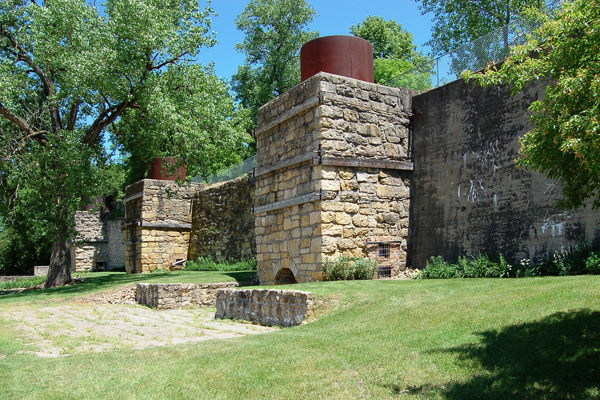Hurstville Lime Kilns Site and Structural Improvements
As part of the Senior Design Capstone Course, Civil & Environmental Engineering students completed an evaluation of four historic lime kilns and property in Jackson County, including the kilns, rock crusher, two-span bridge, dike system, aqueduct, and stormwater management. They also provided designs to protect the structures as well as improvements to the property that enhance the visitor experience.
The Hurstville Lime Kilns site is an important landmark to Maquoketa for its historical value and the education it provides to the public. Located one mile north of Maquoketa, IA along U.S. Highway 61, the kilns were built in the late 19th century and are a source of knowledge about the growth of the area as the land slowly industrialized. The kilns provided a key component for mortar which supported the urbanization of Iowa and surrounding states. The site contains four lime kilns, the rock crusher, and the bridge that spans the North Fork of the Maquoketa River. The kilns and rock crusher lie on land owned by the Jackson County Historic Society while the bridge is on the land of a private owner.
Representatives of the Jackson County Historical Society requested structural analyses of the three historic structures and engineering recommendations on how to rehabilitate them. Two teams of Civil & Environmental Engineering students worked with representatives of the Jackson County Historical Society on plans and designs to rehabilitate the Hurstville Lime Kilns and enhance the property.
One group focused on analysis and rehabilitation of the historic structures. Structural analysis was performed on the existing structures to determine effects of loads and the distribution of internal stresses. Structures that were considered in evaluation include: four historic lime kilns, three spans of retaining wall between the kilns, and a rock crusher building.
A second group focused on flood control, drainage, and the beautification/safety of the project site. Specific tasks related to these objectives include implementing a new drainage plan, parking lot redesign, evaluation of ADA accessibility to reach the top of the kilns, and the addition of trails and lighting.
Important considerations included the overall safety of the site, raising awareness about the kilns, and protection of the kilns and other structures from frequent flooding events.
